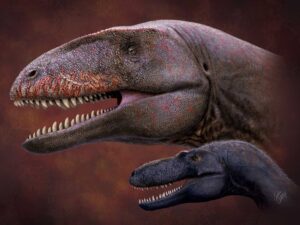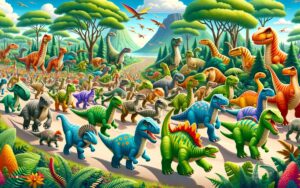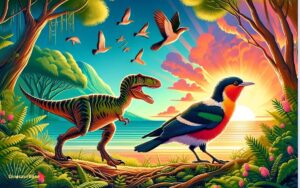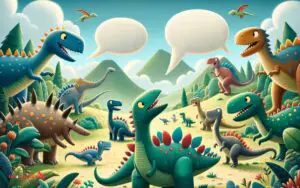How Birds Survived the Dinosaur Extinction: A Detailed Guide
Birds survived the dinosaur extinction by being smaller, more adaptable, and ecologically diverse. Their ability to fly also offered them unique escape routes and access to dispersed food sources.
Unraveling the mystery of how birds outlasted the catastrophic events that extinguished the dinosaurs presents a fascinating glimpse into evolutionary resilience.
Around 66 million years ago, a cataclysmic asteroid strike coupled with extensive volcanic activity initiated an era-defining mass extinction.
This period, known as the Cretaceous-Paleogene (K-Pg) boundary, marks the end of gigantic reptiles and the rise of mammals and birds.
Amidst this chaos, ancestral birds wielded key survival attributes: reduced size meant fewer resources were necessary, their diverse diets allowed for flexible feeding strategies, and flight provided an edge over ground-bound creatures struggling to survive in the devastated landscapes.
These traits, inherited from their theropod dinosaur ancestors, set the stage not just for survival, but for the avian diversity we see today.
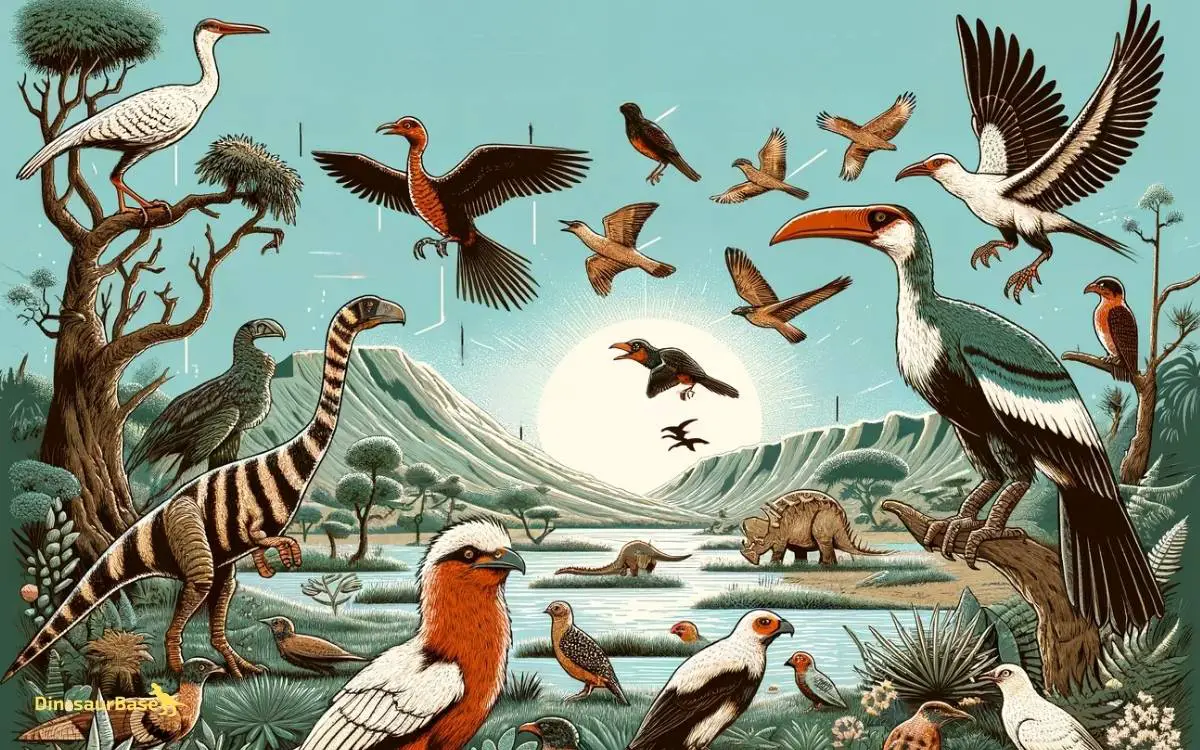
Birds: The Dinosaur Extinction Survivors
65 million years ago, a huge asteroid hit Earth. It wiped out the dinosaurs. But some creatures soared above the chaos. Those creatures were the ancestors of today’s birds.
Experts believe these ancient birds survived while dinosaurs vanished. Let’s unveil this survival mystery.
The End Of The Dinosaur Era
Massive clouds of dust and ash blanketed the sky. The sun’s warmth barely reached Earth’s surface.
Food sources dwindled. The dinosaur dominion faced a grim end. Yet, in these dark times, some winged species thrived.
Early Avian Species And Their Traits
Our feathery friends today had tough ancestors. These early birds were small and agile. Let’s look at traits that helped them survive:
- Size: Small bodies required less food.
- Flight: Flying let them escape and find resources.
- Diet flexibility: They adapted to different foods easily.
- Rapid reproduction: They reproduced quickly.
- Warm-blooded: This helped in regulating their body temperature.
The Cretaceous–paleogene Extinction Event
The Cretaceous–Paleogene Extinction Event was a time of great change on Earth. About 66 million years ago, this event ended the reign of dinosaurs. It allowed birds and other animals to thrive. Here is what happened and how birds managed to survive.
Cataclysmic Impact And Its Consequences
A giant asteroid hit Earth. This impact was near what is now Mexico. It caused fires and tsunamis around the world.
Dust and debris filled the sky, blocking the sun. Plants could not grow without sunlight. Many animals could not find food.
A mass extinction started. Many dinosaurs could not survive. Smaller creatures, like some birds, did. They could find shelter and had diets that helped them live through tough times.
- Impact: Huge asteroid hits the Earth.
- Aftermath: Tsunamis, fires, and a sky full of dust.
- Survival: Some birds find ways to live on.
Ecological Aftermath And The Resilience Of Life
After the disaster, Earth was different. Dinosaurs were gone. This left space and resources for others. Birds that could eat seeds or insects survived best. They found food in places dinosaurs could not. Birds could travel far to find safe spots.
Some had feathers to keep warm in a colder world. Over time, plants grew back. More insects appeared.
Birds had the skills to adapt.
| Survivors | Reasons |
|---|---|
| Birds | Diverse diets, ability to fly, feathers for warmth |
| Insects | Can live in many places, small and numerous |
| Plants | Seed banks, ability to go dormant |
In the new world, birds filled many roles. They became important in the ecosystem. With less competition, they evolved into the many shapes and sizes we see today. Their success shows us the resiliency of life even after the most drastic of changes.
Survival Traits Of Primitive Birds
The cataclysm that wiped out the dinosaurs left the earth barren. Yet, some creatures soared above disaster.
Primitive birds, the ancestors of today’s avians, possessed unique traits crucial for survival. Let’s explore these remarkable adaptations that aided their escape from extinction.
Size Matters: The Role Of Being Small
Big dinosaurs could not find enough food and shelter. Small-sized primitive birds had an advantage. They required less food and could hide easily from dangers.
Being small meant:
- Less habitat required – they thrived in smaller areas.
- Faster reproduction – they could multiply quickly.
- Easier to escape – they avoided predators with agility.
Their diminutive stature allowed them to adapt to shrinking habitats post-impact. Tiny birds found new niches in a changing world.
Primordial Birds: Diet And Adaptability
Early birds were not picky eaters. They had diverse diets that helped them survive. Their ability to switch from insects to seeds to fruits meant they could:
- Find food anywhere – they could eat what was available.
- Outlast competitors – they outlived those that needed specific foods.
- Spread to new areas – they followed their food sources far and wide.
| Diet Type | Benefits |
|---|---|
| Generalist | Flexibility in various environments |
| Opportunistic | Can capitalize on any food source |
This adaptability in diet ensured that these feathered survivors found sustenance even in the harshest conditions.
Niche Exploitation And Radiation
The moment 66 million years ago when dinosaurs vanished, birds faced a new world full of chances.
Niche Exploitation and Radiation are key to understanding how they thrive. This guide delves into how birds filled the void left by the dinosaurs and diversified to become one of the Earth’s most widespread groups of vertebrates.
New Niches: Opportunities After Extinction
Post-dinosaur extinction, the world changed fast. Birds adapted quickly, seeing new habitats grow. Survival meant finding untapped resources to sustain them.
- A shift in diet allowed birds to explore different foods.
- Flying advantages helped birds access new areas.
- Nesting habits evolved to suit new environments.
These adaptations led birds into niches once dominated by other species. They became important ecosystem players.
The Emergence Of Modern Bird Groups
As earth recovered, bird species soared. This period witnessed the birth of modern bird groups.
| Era | Event | Modern Bird Groups |
|---|---|---|
| Post-Cretaceous | Mass extinction | Neornithes rise |
| Palaeogene Period | Rapid diversification | Passerines flourish |
| Neogene Period | Further evolutionary change | Specialized flyers develop |
By occupying new niches, birds not only survived but thrived. They adapted in shape, size, and behavior, shaping the bird world we know today.
Fossil Evidence And Scientific Studies
The catastrophic event that wiped out dinosaurs left a lingering question: how did birds survive? Scientists use fossil records and advanced technologies to uncover this mystery. These investigations paint a vivid picture of resilience and evolution.
Avian Fossils: Piecing Together The Past
Fossils of ancient birds are like pieces of a prehistoric puzzle. They show us which bird species lived alongside dinosaurs. These clues help us understand their survival strategies.
- Archaeopteryx, a primitive bird, links dinosaurs to modern birds.
- Small size and ability to fly may have helped birds to escape danger.
- Fossilized nests suggest some birds survived by living in protected environments.
Methodologies and Technologies for Understanding Extinction Survival
Methodologies And Technologies For Understanding Extinction Survival
Today’s scientists use cutting-edge tools to study how birds survived when dinosaurs didn’t.
| Technology | Use |
|---|---|
| CT Scanning | Creates 3D models of fossils without damaging them. |
| Radiometric Dating | Tells the age of fossils with precision. |
| Isotope Analysis | Reveals the diet and habitat of ancient birds. |
Collaborative research combines paleontology, genetics, and computer simulations. This mix helps scientists understand how birds adapted to changes.
Implications For Modern Conservation Efforts
Understanding how birds survived while dinosaurs did not holds key lessons for protecting today’s wildlife.
By examining the survival strategies of ancient birds, we can develop better conservation methods for current avian species under threat from habitat loss, climate change, and human activities.
Learning From The Past To Protect Current Avian Species
When certain dinosaurs evolved into birds, they adapted in ways that ensured their survival.
Modern conservationists look to these adaptive strategies to inform practices that can help protect birds now facing extinction risks. Recognizing patterns in historical survival can guide effective policy-making today.
- Diverse diets helped ancient birds survive; similarly, protecting various food sources can help modern birds thrive.
- Flight adaptation was crucial; today, safeguarding flight corridors is equally important.
Conservation Strategies Inspired By Survival Mechanisms
Survival mechanisms of ancient birds serve as a blueprint for contemporary conservation strategies.
By integrating these mechanisms, new approaches aim to increase the resilience of bird populations against a variety of environmental threats.
| Survival Mechanism | Inspired Conservation Strategy |
|---|---|
| Migration | Establishing protected migratory routes |
| Nesting flexibility | Creating varied nesting habitats |
Implementing such strategies requires a multi-faceted approach, from legislative action to community engagement. Each step taken can make a substantial impact on the future of avian species worldwide.
Frequently Asked Questions Of How Birds Survived The Dinosaur Extinction: A Detailed Guide
How Did All Dinosaurs Except Birds Go Extinct?
All dinosaurs, except birds, became extinct due to a catastrophic asteroid impact about 66 million years ago. This event caused drastic climate changes, disrupting ecosystems and food chains.
How Did The Early Modern Birds With Toothless Beaks Survive The Extinction Event At The End Of The Cretaceous?
Early modern birds with toothless beaks survived the Cretaceous extinction by likely having diverse diets, allowing them to adapt to changing food sources and ecological conditions following the event. Their smaller size possibly also reduced their food requirements during the crisis period.
Did Any Dinosaurs Other Than Birds Survive?
No, birds are the only dinosaurs that survived the mass extinction event. All non-avian dinosaurs became extinct approximately 66 million years ago.
How Did Birds Evolve From Dinosaurs?
Birds evolved from theropod dinosaurs, a group that included carnivores like the Velociraptor. Feathered dinosaurs gradually developed flight capabilities, leading to the diverse avian species we see today.
Conclusion
As we unpack the mystery of avian survival through the Cretaceous-Paleogene boundary, one thing remains clear: adaptability is key to endurance.
Birds, descendants of theropods, thrived post-extinction due to their size, varied diets, and reproductive strategies. Their astonishing resilience offers profound insights into the very essence of survival.
Continue exploring, and marvel at nature’s tenacity in the face of adversity.

